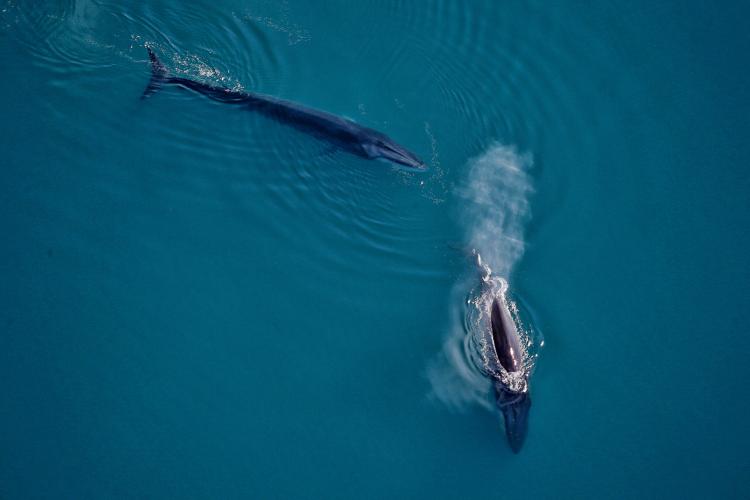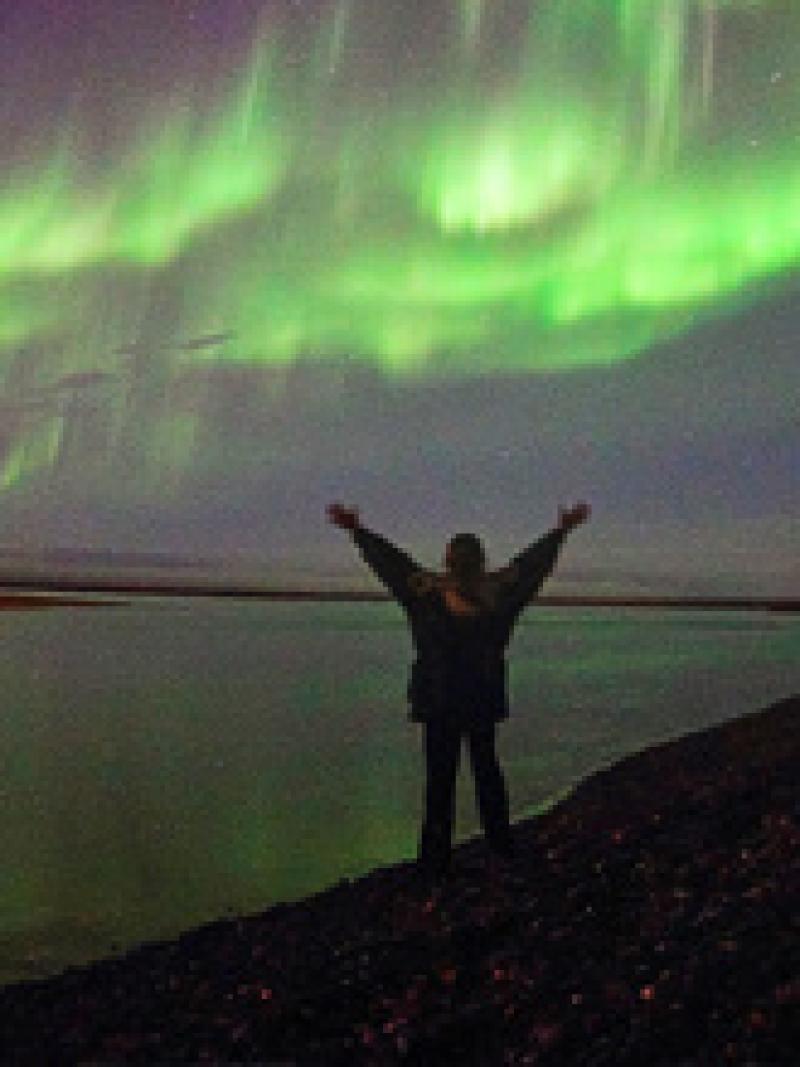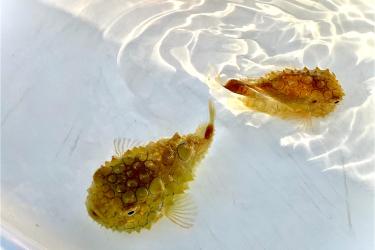These fin whales were sighted in early July 2019, in the southern Chukchi Sea region of our survey area. Notice the white chin and jawline on the right side of the head. A fin whale exhibits an asymmetrical head coloration; the left side is dark, while the right side is light.
The Utqiaġvik-based aerial team is continuing their surveys in the eastern Chukchi Sea. On a survey in late July, the team saw a subarctic whale species farther north in the Pacific Arctic than it had ever been seen before!
What do we mean by “subarctic whales”? Technically, subarctic means anything just below the Arctic Circle, south of 66.5° N. In Utqiaġvik, Alaska, we are at about 71.3° N, so pretty far into Arctic territory, and our survey area extends even farther north. To us, a subarctic whale species is a species usually found farther south in the North Pacific Ocean, which includes the Bering Sea, during spring, summer, and into autumn months; this includes humpback whales, fin whales, and minke whales. We haven’t sighted any minke whales yet this year, so here we focus on humpback and fin whales.


This map shows the monthly distribution of all fin whale sightings from our aerial surveys since 2008. Notice that there are more sightings in the bottom left corner during every month compared to the region farther north. If you look to the top left you will see an orange diamond. This marks the northernmost sighting of fin whales ever recorded, detected on 27 July, 2019.

This map shows all of our aerial survey sightings of humpback whales since 2008 in the eastern Chukchi Sea. You will notice the higher concentration of sightings at the bottom left of the map, but you can also see a few sightings to the north and following along the coast over towards Utqiaġvik. In the upper left you will see the yellow symbols showing the westernmost sighting of humpback whales in the northeastern Chukchi Sea, detected on 27 July 2019.
You may be wondering “So what’s the big deal? A few whales wandered a little farther north than usual, big whoop”. Well, that’s where the data we are collecting get interesting. These aren’t the only subarctic whale sightings we have had, as our maps clearly show. For the last decade or so, we have been seeing an increasing number of subarctic whale species farther north than they were known to occur in the eastern Chukchi Sea. This historical distribution is based on data collected during aerial surveys conducted from the early 1980s to early 1990s when no subarctic whale species were detected in our study area. What does this all mean? Marine ecologists think there may be a combination of factors at work here.
Commercial whaling for several large cetaceans, including humpback and fin whales, occurred legally in the North Pacific from the 1800s to the 1940s, and illegal whaling continued well into the 1970s. Undoubtedly, the scale of commercial whaling significantly reduced the populations of humpback and fin whales in the region. A more northward distribution could indicate that the populations of these species are rebounding from historical whaling and expanding into other waters.


This image shows the basic food web, or who eats what, in the Pacific Arctic marine ecosystem. Humpback and fin whales eat zooplankton and fish
However, to fuel this expansion, whales need food to eat, and lots of it. A 70-foot (the length of an 18-wheeler), 45-ton adult fin whale can eat up to 4,000 pounds of food a day! Humpback and fin whale diets consist of mainly krill, fish, and squid. One hypothesis explaining what is happening is that lower latitude prey species are spreading farther north due to warming water, which is in part being caused by an earlier and greater loss of summer sea ice in the Arctic. This warming occurs because the sun's rays that were once being reflected away by the sea ice are now being absorbed by the open ocean, which in turn increases the sea surface temperature. All of this, and an increase of approximately 30% in net primary productivity (basically a measure of how much food is available at the bottom of the food chain to be consumed) may be working in concert to bring the humpback and fin whales northward to our survey area.
The sightings we have had this season outline how far west and north humpback and fin whales have expanded their feeding grounds. What is especially interesting about these particular sightings is that these whales were found feeding in an area usually devoid of large whales!! A region historically known to not support feeding large whales is now doing just that. This is why long term, multi-year research projects like ASAMM are important - they allow us to find indications of a changing environment. In this case, whales are showing us the dynamic and rapid changes that are happening in our own Arctic backyard.




